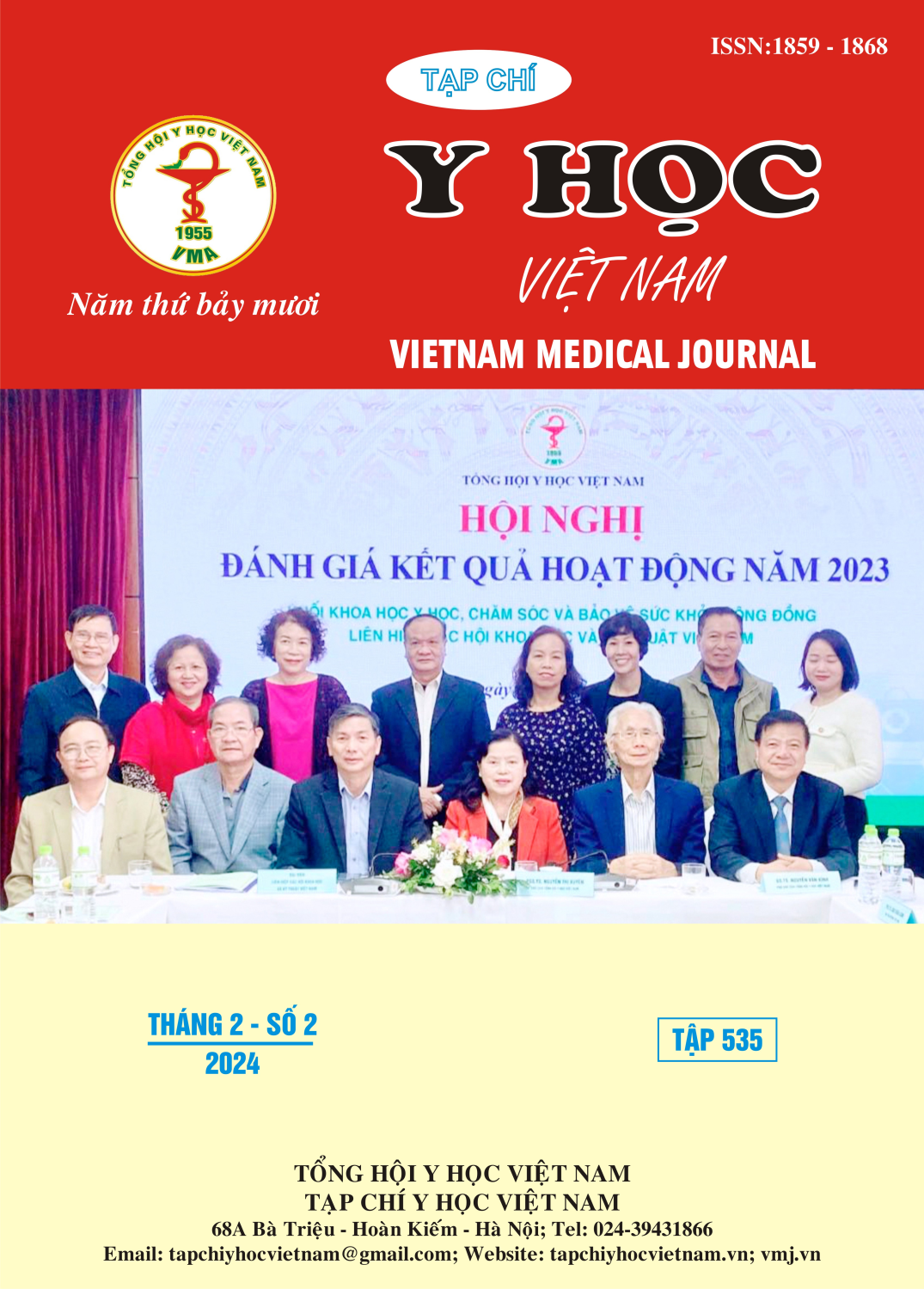EFFICACY OF IMMUNOADSORPTION TREATMENT ON PATIENT WITH GUILLAIN BARRÉ SYNDROME
Main Article Content
Abstract
Objective: Guillain Barré syndrome is a common neuro-immune disease that can cause many sequelae. There are many treatments for this syndrome with the goal of speeding up recovery, minimizing sequelae, in which antibody-adsorbent hemofiltration has been widely applied and proven effective. This study aims to evaluate the results of antibody-adsorbent hemofiltration in the treatment on patients with Guillain Barré. Method: a prospective interventional study, data was collected on all patients diagnosed with Guillain Barré syndrome who were treated by imminoadsorption during the period from September 2022 to August 2023. Clinical indicator which use the Hughes grades were evaluted before and after immonoadsorption. Result: 23 patients were inrolved in this study,in which male/female ratio was 3:2, mean age: 55.4 ± 13.9 years old and received average 4.4. ±0.72 times for adsorption. Immunoadsorption was effective in improveing the Hughes score (4.3±0.45 versus 2.8±1.25, p=0.000). Conclusion: The Immunoadsorption improves the level of loss of mobility as shown by the Hughes score in Guillain barré patients, especially in the group of patients with single electromyographic changes.
Article Details
Keywords
Guillain Barré syndrome, GBS, Immunoadsorption
References
2. Satoshi Kuwabara, Sonoko Misawa. Future treatment for Guillain–Barré syndrome. doi.org/ 10.1111/cen3.12343
3. N. Galldiks, et al. Selective Immune Adsorption Treatment of Severe Guillain Barre´ Syndrome in the Intensive Care Unit. Neurocrit Care (2009) 11:317–321. DOI 10.1007/s12028-009-9252-6
4. Trần Đình Trung. Đánh giá hiệu quả của phương pháp Thay huyết tương bằng dịch thay thế albumin 5% trong điều trị hội chứng guillain-barré. Luận văn thạc sĩ 2018
5. Takehiro Seta, et al. Factors influencing outcome in Guillain-Barré Syndrome: comparison of plasma adsorption against other treatments. Clin Neurol Neurosurg. 2005 Oct;107(6):491-6. doi: 10.1016/j.clineuro.2004.12.019.


